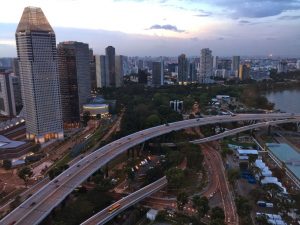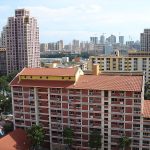The Urban Redevelopment Authority (URA) said on Wednesday (3 May) that it will intervene, if needed, to prevent an oversupply of too may tiny apartments or shoebox units in Singapore’s housing stock.
The URA was responding to several members of the public who had expressed unhappiness that with more shoebox units, the size of private residential units is getting smaller and smaller. They asked the Government to step in to ensure that new developments adhere to a certain minimum size.
Find out about the best home loans for refinancing or buying a property here.
In responding to the public’s concerns, URA’s development control group director Goh Chin Chin said: “We agree that shoebox units should not form a disproportionately large portion of Singapore’s housing stock.”
“We are monitoring the trend closely and will adjust the guidelines if needed,” he added.
Since 2013, the Government has introduced a slew of cooling measures like the Additional Buyer’s Stamp Duty and Qualifying Certificate rules, all of which have had an impact of the buying decision of price conscious property buyers. More recently, the Government introduced an additional cooling measure of buyer’s stamp duty of 4 per cent on the portion of a property’s value that is more than $1 million.
Some analysts have predicted that developers being mindful of price sensitive buyers, may set new trends in space usage and are likely to build smaller units to keep prices within their reach in Singapore’s housing stock. While others have suggested that developers may build smaller shoebox units in order to keep home prices affordable.
Table of Contents
The Urban Redevelopment Authority (URA) has mandated a minimum average size of 70 sq m per unit in a development for projects outside of the Central area. URA’s guideline does not prescribe the minimum unit size for Singapore’s housing stock, but instead proposes that the building gross floor area divided by 70 sq m to compute the maximum number of units allowed per development. URA’s rule is meant to prevent overcrowding in a development, particularly those made up of a large number of shoebox units.
Members of the public have pointed out that URA’s formula “emphasises only the “average” of an aggregate of sizes per development, but fails to mandate 70 sq m as the size for a shoebox unit or to restrict the number of such units allowed,” and that “smart developers can circumvent the formula and maximise profits by designing apartments of various sizes, which will then meet the “average” requirement.”
Many home buyer (including those affected by the ongoing en bloc frenzy) feel that shoebox units in Singapore’s housing stock benefit no one except property developers, who stand to make more money.
Apart from being tiny, the other distinguishing trait of a shoebox is a stupidly high price per square foot. For example, City Suites at Balestier Road has shoebox units which range between $1,600 to $1,700 psf. 26 Newton has units that go for upward of $2,500 psf. This means that at around 474 square feet, you can end up paying $1.2 million for a property which is smaller than a 3-room flat.
And shoebox units are not really rare. In 2013, there were about 9,600 shoebox units in Singapore. In 2015, analysts were predicting a bumper crop of shoebox units (an estimated 1,985 units) to hit the market. One only needs to do a cursory search on listings site to see how many such units are available for sale.
Some members of the public have suggested that the property market here is an oligopoly with just a few big players offering similar products, and that there were no real choices when it comes to purchasing new properties.They have charged that developers have compromised on the sizes of flats in order to make good profits while keeping overall apartment prices affordable.
The sizes of flats have suffered as a result as well – shrinking drastically from just 10 years ago. Three-bedroom apartments have shrank from an average of 1,200 sq ft to just 900 sq ft now, while two-bedroom apartments have declined from 800 sq ft to 600 sq ft or less.
 Back in 2012, then Minister for National Development Khaw Boon Wan said that “HDB plans based on certain design norms… has not changed for the past 15 years”.
Back in 2012, then Minister for National Development Khaw Boon Wan said that “HDB plans based on certain design norms… has not changed for the past 15 years”.
The Minister later clarified that although the average size of a 4-room flat had shrunk from 105 sq m in the 1980s to 90 sq m since 1997, the average household correspondingly fell from 6.5 in the 1970s to the current 3.7. As a result, the average space per resident has increased.
A study by property consultancy Knight Frank in 2014 also said that the sizes of condominium units here were shrinking because developers have to keep new project prices affordable in ever tougher market conditions.
Home-buyers should take note however that not all banks like shoebox units and may not provide home loans for their purchase. But this has not stopped developers from building even smaller units at higher psf, which in turn leads to a lot of premature investing in shoebox units.
Some experts have however suggested that with disruptive technology like Food Panda and Deliveroo, the younger generation may not find a need to cook, making way for tiny shoebox units. The changing demographic trends of smaller family units, more singles and an ageing population, may also pave the way for shoebox units to find more acceptance here.
But as of now, the consensus seems to be that our living spaces should not shrink further and that the trend of shoebox units does not bode well for our city.
—
If you are home-hunting, our Panel of Property agents and the mortgage consultants at icompareloan.com can help you with affordability assessment and a promotional home loan. Just email our chief mortgage consultant, Paul Ho, with your name, email and phone number at paul@icompareloan.com.






